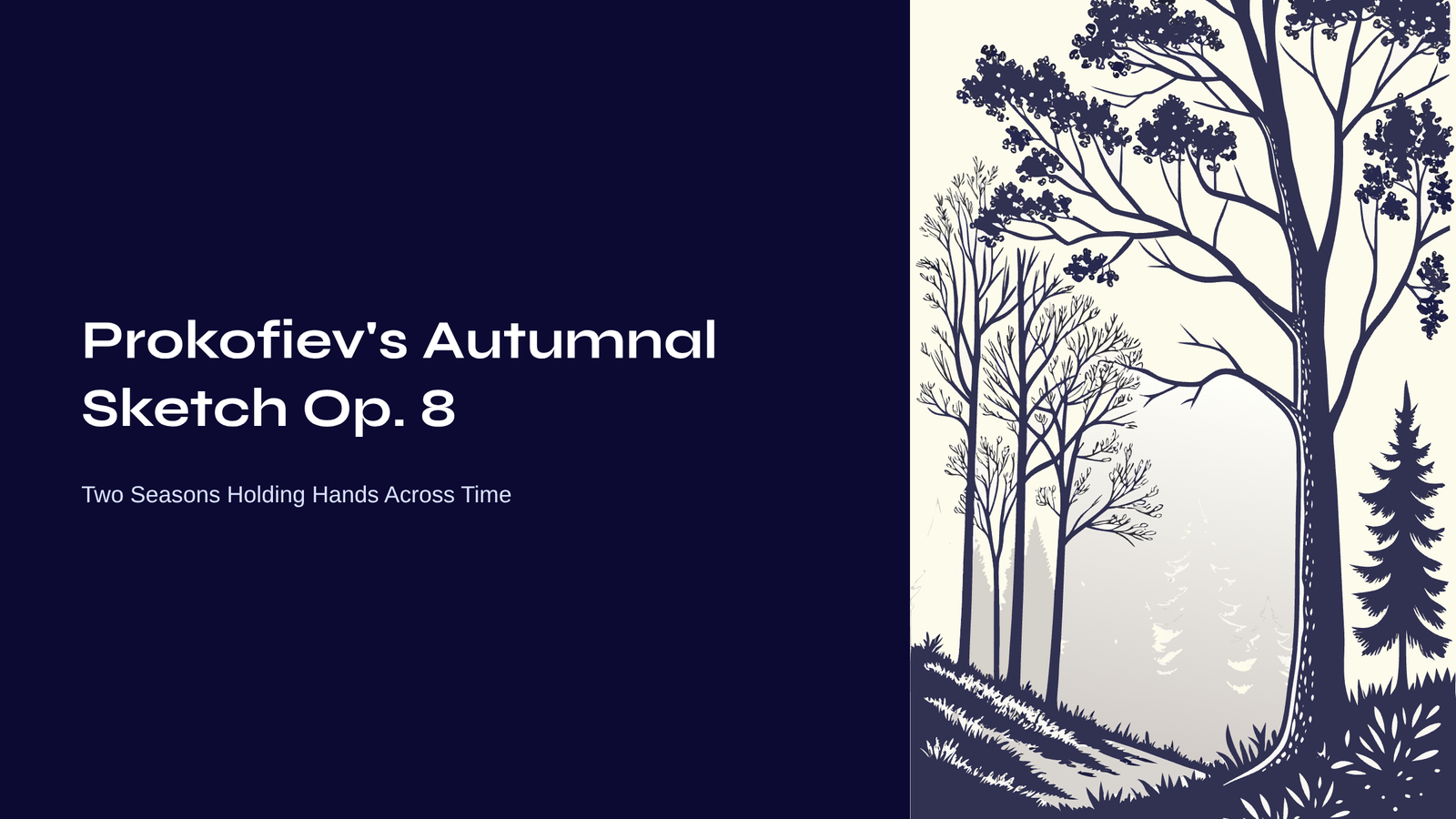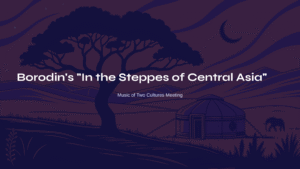Table of Contents
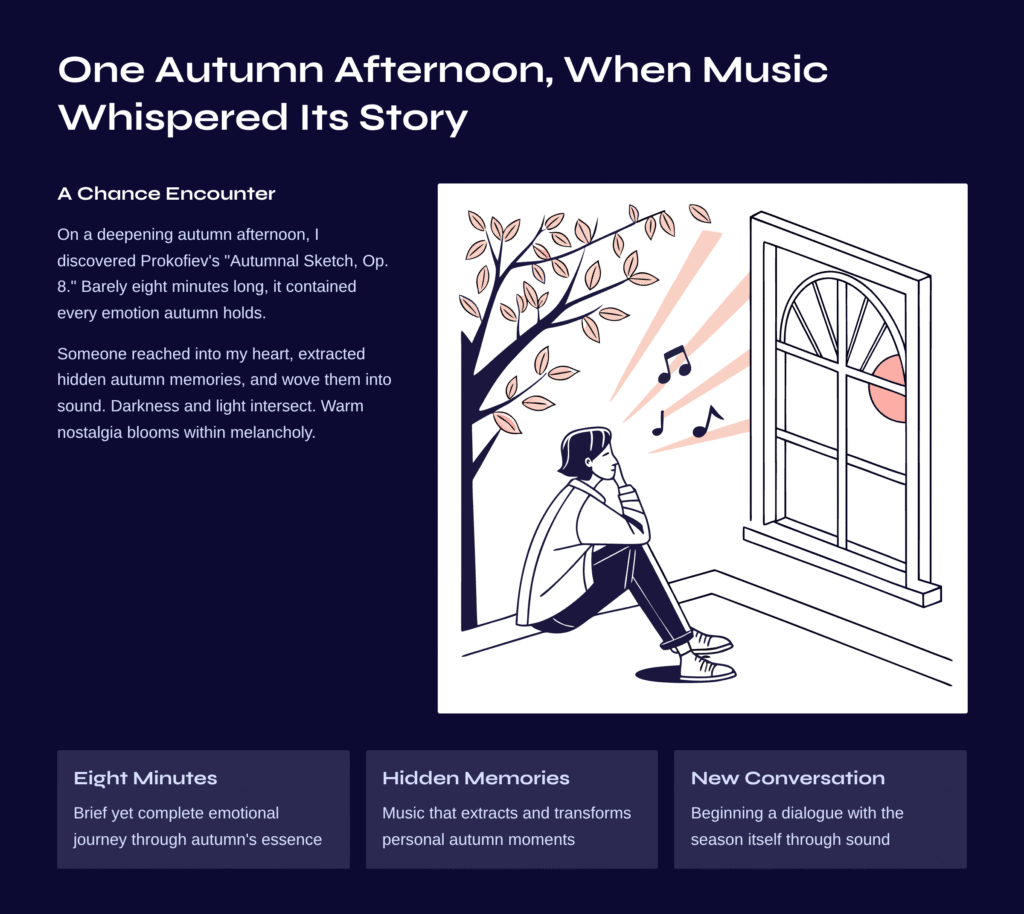
One Autumn Afternoon, When Music Whispered Its Story to Me
On a deepening autumn afternoon, the sunlight streaming through my window seemed unusually slanted. It was then that I encountered a piece of music by chance—Prokofiev’s “Autumnal Sketch, Op. 8.” Though barely eight minutes long, this brief composition contained all the emotions that the season of autumn could possibly hold.
How can I describe what I felt when I first heard it? It was as if someone had reached deep into my heart, extracted the autumn memories I had hidden there, and woven them into sound. Those moments where darkness and light intersect, the warm nostalgia that blooms even within melancholy. Listening to this piece, I began a new conversation with the season of autumn itself.
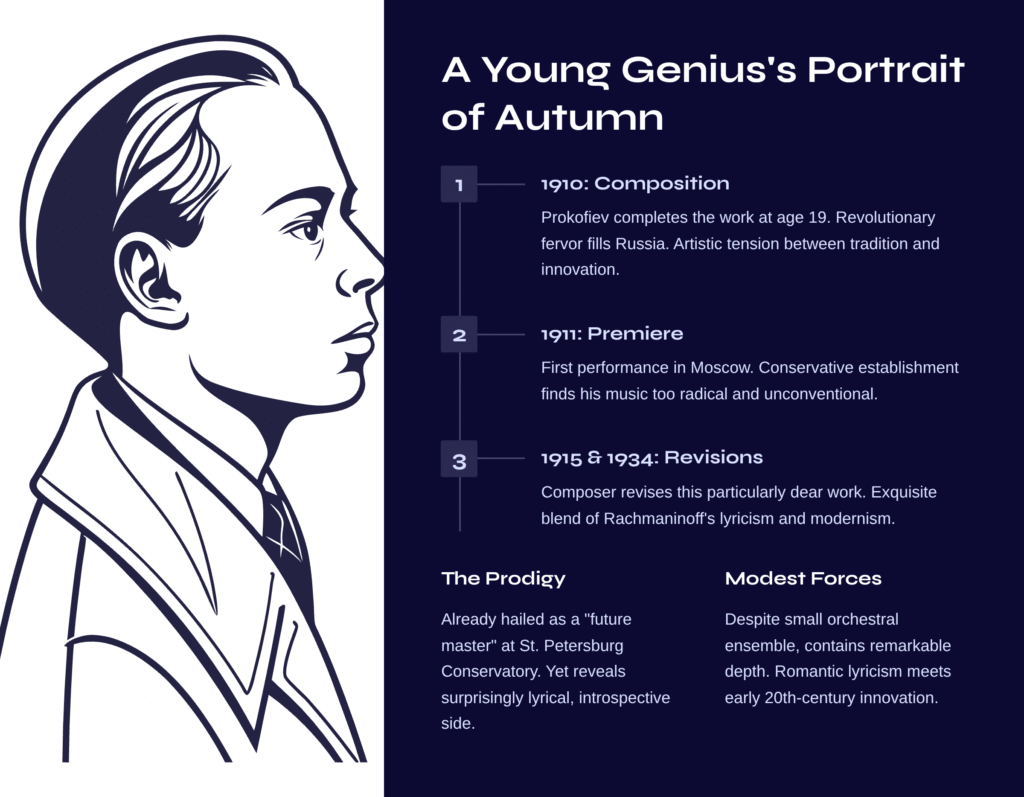
A Young Genius’s Portrait of Autumn
The fact that Sergei Prokofiev completed this work in 1910, at the tender age of 19, is truly remarkable. Russia at that time was experiencing a period of great upheaval. Revolutionary fervor was in the air, and the artistic world was filled with tension between tradition and innovation.
Prokofiev was already being hailed as a “future master” at the St. Petersburg Conservatory. However, his music was considered far too radical and unconventional for the conservative Russian musical establishment of the time. Yet in “Autumnal Sketch,” he revealed a surprisingly lyrical and introspective side.
The piece premiered in Moscow in 1911 and underwent revisions in 1915 and 1934. The composer himself seemed to hold this work particularly dear. Despite its modest orchestral forces, it contains an exquisite blend of Rachmaninoff’s romantic lyricism and early 20th-century modernism.
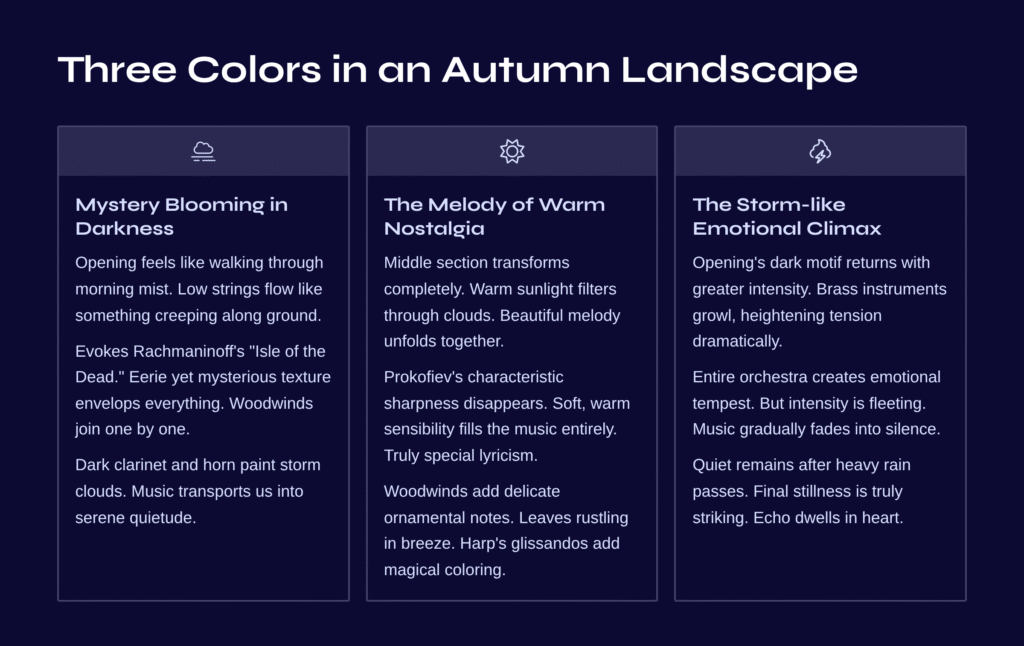
Three Colors in an Autumn Landscape
The First Color: Mystery Blooming in Darkness
The opening of the piece feels like walking through morning mist. The low, deep sounds of the strings flow like something creeping along the ground. This section is said to evoke Rachmaninoff’s “Isle of the Dead,” and I can truly hear the resemblance. There’s something eerie yet mysterious that envelops the entire musical texture.
As the woodwinds join one by one, the sound becomes even more profound. The dark timbres of the clarinet and horn in particular seem to paint the storm clouds of an autumn evening sky. In this moment, the music transports us far from the noise of daily life into a world of serene quietude.
The Second Color: The Melody of Warm Nostalgia
By the middle section, the atmosphere completely transforms. Like warm sunlight filtering through clouds, a beautiful melody unfolds, sung together by woodwinds and strings. The lyricism of this section is truly special. Prokofiev’s characteristic sharpness is nowhere to be found; instead, a soft and warm sensibility fills the music entirely.
The way the woodwinds add delicate ornamental notes above the strings’ melody is like leaves rustling in the breeze. The harp’s subtle glissandos add a magical coloring to this beautiful moment.
The Third Color: The Storm-like Emotional Climax
In the concluding section, the opening’s dark motif returns, but this time with much greater intensity. The brass instruments growl as they heighten the tension, and the entire orchestra becomes one to create an emotional tempest.
But this intensity is fleeting—the music gradually fades into silence. Like the quiet that remains after a heavy rain has passed, only the resonance lingers in the space. This final moment of stillness is truly striking. Even after the sound disappears, its echo continues to dwell in the heart for some time.
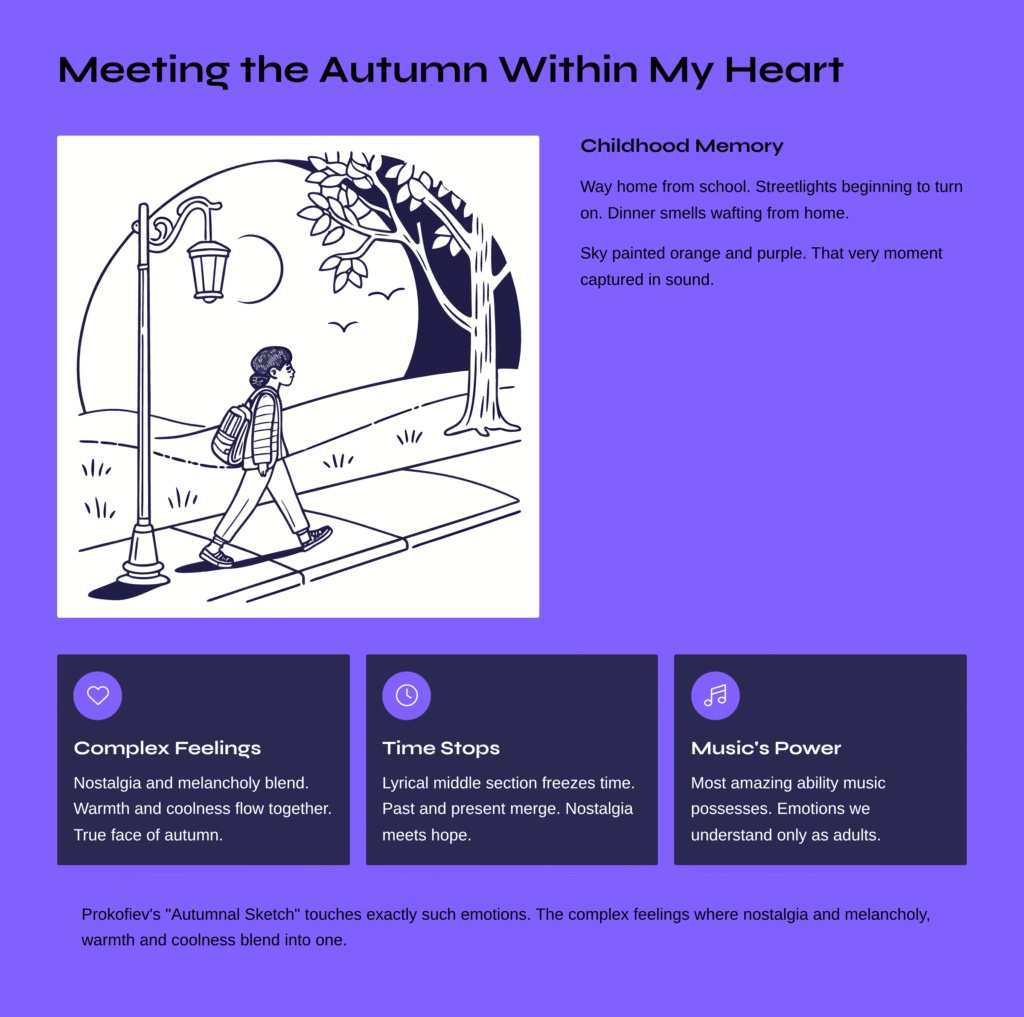
Meeting the Autumn Within My Heart
When I first heard this piece, I recalled a moment from my childhood autumn evenings. On the way home from school, just as the streetlights were beginning to turn on. The smell of dinner preparation wafted from home, and the sky was painted in orange and purple—that very moment.
Prokofiev’s “Autumnal Sketch” touches exactly such emotions. The complex feelings where nostalgia and melancholy, warmth and coolness blend into one. It seems to musically convey the true face of autumn that we can only understand as adults.
Especially when listening to the lyrical melody of the middle section, I feel as if time has stopped. That moment when past and present, nostalgia and hope flow together as one. Perhaps this is among the most amazing powers that music possesses.
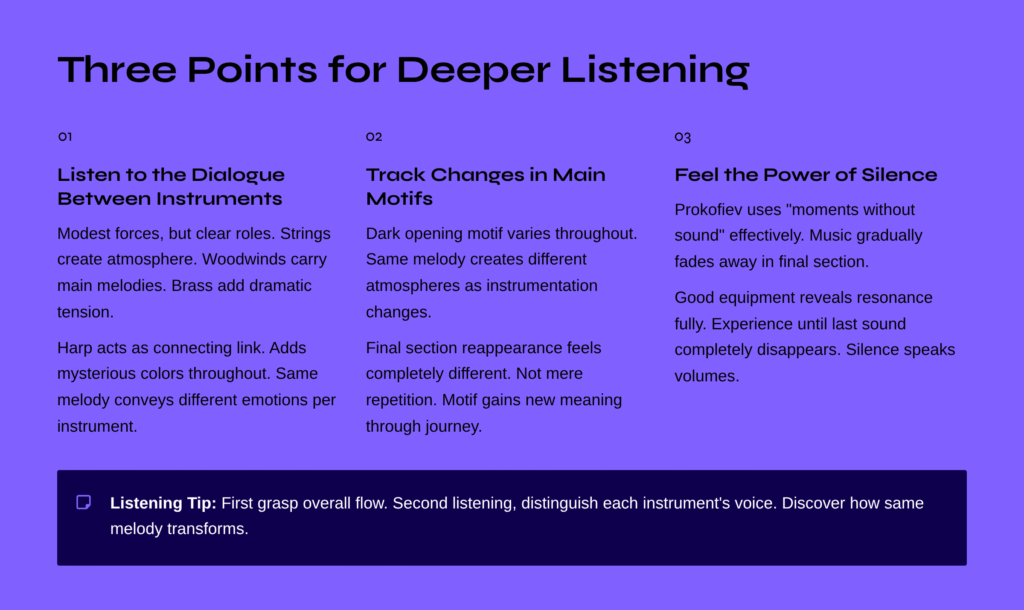
Three Points for Deeper Listening
1. Listen to the Dialogue Between Instruments
Though this piece uses modest forces, each instrumental group has a very clear role. The strings primarily create atmosphere, the woodwinds carry the main melodies, and the brass appear at dramatic moments to add tension. The harp acts like a connecting link, adding mysterious colors to the overall sound.
First, grasp the overall flow, then on your second listening, try to distinguish each instrument’s voice. You’ll discover that the same melody conveys completely different emotions depending on which instrument plays it.
2. Track the Changes in the Main Motifs
Listen to how the dark motif that appears at the beginning is varied and developed throughout the entire piece. The same melody creates completely different atmospheres as the instrumentation and harmony change.
Particularly when this motif reappears in the final section, the feeling is completely different from the beginning. It’s not mere repetition, but rather the motif has gained new meaning through the musical journey we’ve taken.
3. Feel the Power of Silence and Resonance
Prokofiev uses the power of “moments without sound” very effectively in this piece. Pay careful attention to the process where the music gradually fades away, especially in the final section. With good audio equipment or headphones, you can fully experience the resonance until the very last sound completely disappears.
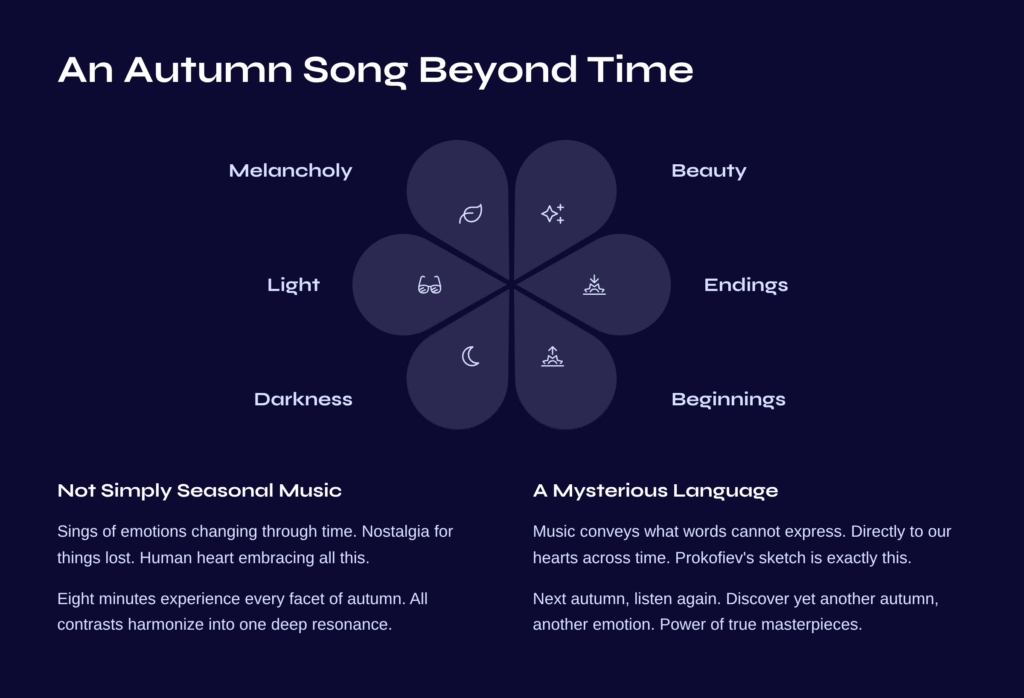
An Autumn Song Beyond Time
Prokofiev’s “Autumnal Sketch” is not simply music depicting seasonal scenery. It is a work that sings of our emotions changing through the flow of time, nostalgia for things lost, and the human heart that continues to live embracing all of this.
In the brief span of eight minutes, we experience every facet of the season called autumn. Melancholy and beauty, endings and beginnings, darkness and light. And the deep resonance created when all these contrasts harmonize into one.
Every time I listen to this piece, I think: music truly is a mysterious language. The power to convey emotions that words cannot express, directly to our hearts across time. Prokofiev’s “Autumnal Sketch” is exactly such music.
When the next autumn comes, listen to this piece again. You’ll likely discover yet another autumn, yet another emotion. That is precisely the power that true masterpieces possess.
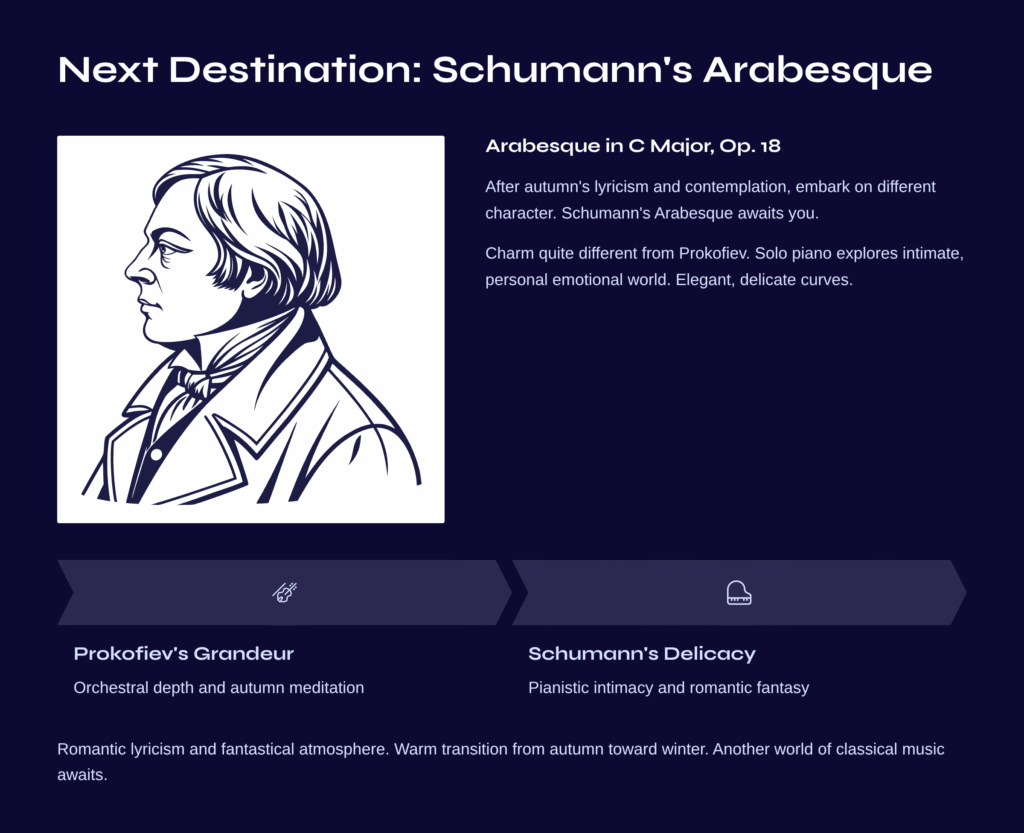
Next Destination: Schumann’s Arabesque in C Major, Op. 18
Having experienced autumn’s lyricism and deep contemplation, how about embarking on a journey with music of a somewhat different character? I recommend Robert Schumann’s “Arabesque in C Major, Op. 18.”
Schumann’s Arabesque possesses a charm quite different from Prokofiev’s Autumnal Sketch. As a solo piano work, it allows us to explore a more intimate and personal emotional world. True to its title “Arabesque,” the elegant and delicate melodic curves create beauty like intricate lacework.
Schumann’s characteristic romantic lyricism and fantastical atmosphere will serve as a warm transition point from autumn’s meditative mood toward winter. From Prokofiev’s orchestral grandeur to Schumann’s pianistic delicacy—another world of classical music awaits you.
